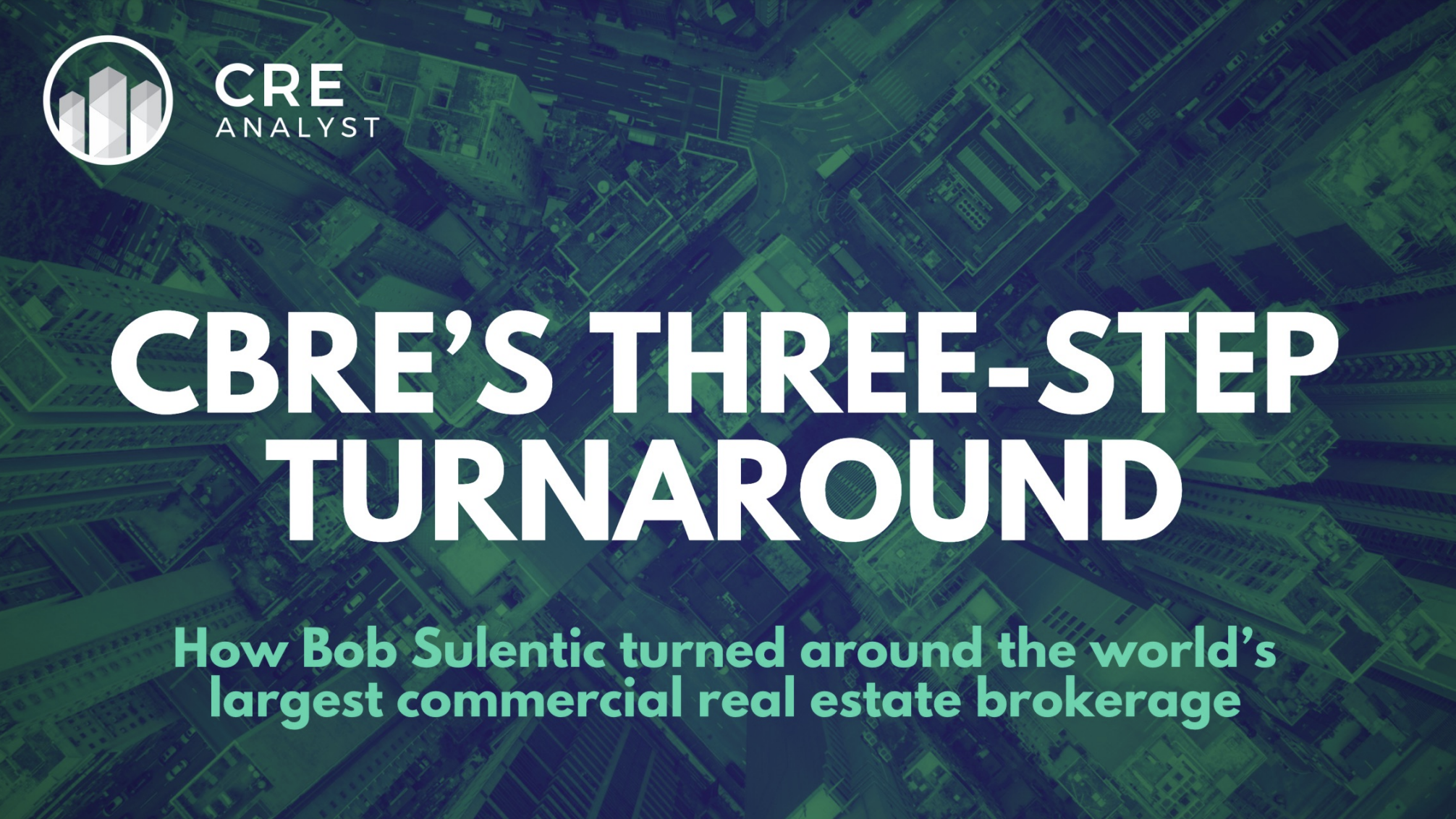
The evolution of CBRE: Boring is good?
In 2006, CBRE acquired Trammell Crow Company. Little did they know, this move would set the stage for a dramatic transformation.
CBRE's journey...
---- Pre-2008 ----
Dominant in brokerage but vulnerable to market volatility. Heavily leveraged.
Before finding himself in the CFO seat at CBRE during the GFC, Bob Sulentic (a 20-year industry veteran who had started as an industrial leasing agent in Houston) was Trammell Crow's CEO.
---- 2008 GFC ----
Plummeting transaction volumes and excess debt led the stock price to fall 90%+.
---- Post-GFC ----
Sulentic escaped the GFC with "lessons learned," which he has leveraged to remake the world's largest brokerage. Among them...
-- Decreased brokerage concentration
-- Focus on predictable earnings (property & facilities management)
-- Reduced debt reliance
-- Complementary acquisitions of stable platforms
Result? A more stable, diversified CBRE with higher multiples and consistent dry powder.
Even CBRE's biggest detractors would probably have to admit that Sulentic has been a generational CEO who has served his shareholders well.
Questions...
1. What do you think about this strategic pivot? Is this a model other real estate firms should follow?
2. CBRE's investment management and development businesses generate high margins, but is their best fit within a publicly traded property manager?
3. Has CBRE's embrace of stability and predictability made it a less attractive place for brokers to work?
You can read the full report here.

COMMENTS